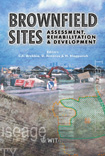Redevelopment Potential Of Landfills. A Case Study Of Six New Jersey Projects
Price
Free (open access)
Transaction
Volume
55
Pages
Published
2002
Size
931 kb
Paper DOI
10.2495/BF020041
Copyright
WIT Press
Author(s)
J. B. Wiley, III & B. Assadi
Abstract
Redevelopment potential of landfills. A case study of six New Jersey projects J.B. Wiley, III & B. Asadi Sadat Associates, Inc, United States of America. Abstract The paper will compare and contrast the experience of six landfill redevelopment projects engineered by Sadat Associates, Inc., where the authors, Messrs. Wiley and Assadi, have each worked for over 14 years. The projects include one community college, the largest mall in the region, an office development, an 18-hole golf course and two housing developments. A total of 378 acres of waste have been properly closed and redeveloped in these projects. The construction value of the projects currently exceeds $500 million, and when completed, will exceed $1 billion. Some of the projects involved constructing major building and site improvements, such as parking areas on top of old waste. Some projects involved waste consolidation/ relocation on site. Two of the projects involved beneficial use of over 7 million cubic yards of recycled materials and stabilized, contaminated dredge as part of the site development. The paper will provide a comparison of the study, design and construction process at these six sites and will address relevant environmental and geotechnical factors. The paper will also address regulatory issues, including site contamination/remediation, and other environmental permit needs. In addition, the paper will explore the financial incentives and economic factors that made the projects feasible as well as institutional arrangements and community relations aspects. The paper provides an evaluation of the many factors that make landfill redevelopment feasible in order to encourage practitioners in the field to consider the widest range of options for end uses of closed landfills. The main factors that affect landfill redevelopment are: size of site, degree of contamination, type of waste, depth of waste, location, wetlands and open water bodies, use of recyclable materials for remediation and development purposes, land value, willing developer, regulatory agency policy/rules, engineering solutions, and financial initiatives.
Keywords




